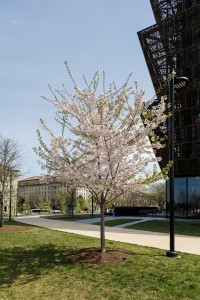
Phenology
Phenological information varies depending on growing region and climate changes. For instance, one of DC’s famous cherry trees is going to bloom at a different time than even a cherry tree in southern Virginia. In order to have the most accurate information for the trees, orchids, and smaller plants that make up our collection, we record when our specific plants bloom, fruit, and change color.
Now the public can help, too! Smithsonian Gardens is partnered with the USA National Phenology Network through Nature’s Notebook. You, your friends, family, or school groups can participate in a citizen science project and be a volunteer researcher for the Smithsonian. We have selected ten trees across each of our Gardens on and near the National Mall which demonstrate the diversity and history of our region. Check out the tour here, and contribute your own scientific data here. Happy observing!
Now you, your friends, family, or school group can help! Smithsonian Gardens is partnered with the USA National Phenology Network through Nature’s Notebook to track phonological information for ten trees in the Smithsonian Gardens Tree Collection. The trees selected for this citizen science project demonstrate the diversity and history of tree life in our region. Take our online Nature’s Notebook Phenology Trail tour to learn the location of the selected trees and then visit them in person to collect and contribute your own scientific data.
Examples of different phenological phases of Prunus yedoensis, Yoshino Cherry.




